Who is Vishnu: History of Lord Vishnu

Lord Vishnu is one of the most important and revered pantheons of Hindu Gods. He is part of the Holy Divine Trinity of Brahma, Vishnu, and Mahesh, as per Hinduism, where Lord Brahma is the Creator, Lord Shiva is depicted as the destroyer or transformer, and Lord Vishnu is the preserver of the Universe, the protector of all realms of existence. This Hindu Triad represents that all three Divine forces are part of one. However, the Puranas also say that Lord Brahma came into being from a Lotus, which appeared from Lord Vishnu's navel. Therefore as per this legend, Lord Vishnu is the one who was responsible for Lord Brahma is the creator of the Universe.
Lord Vishnu, is believed to be the One who is also in charge of maintaining the Cosmic balance, a reason for which the Lord has taken different Avatars and appeared on Earth. Among the many other attributes of Vishnuji, He oversees the order of all things, the Dharma. Known as benevolent and giving, Lord Vishnu restores Karma and allows us to correct ourselves and when deserved, grants Moksha (liberation from the cycle of birth and death). He dwells in all humans and is the all-pervasive Lord. We may say that these are some of the primary attributes or aspects of Lord Vishnu, as the powers of the Lord extends beyond words. Lord Vishnu is purity, The Vaishnava sect considers Lord Vishnu to be the Supreme Godhead, the creator, preserver, and transformer, all in one.
Generally and popularly, Lord Vishnu is portrayed reclining on the coiled King of Serpents, Shesha or Ananta, in the Sheer Sagar (Celestial Ocean of Milk) with Goddess Laxmi sitting at His feet. The other one displays the Lord standing on a Lotus flower. Another way that He is shown is sitting in a Yogic posture.
Physically the mesmerizing Lord Vishnu has been portrayed as a blue-coloured God Who looks Divinely handsome, His eyes are shaped like Lotus petals filled with love and compassion, curly locks flowing from His head to shoulder and a pleasant heartwarming smile always adorns His face. His iconography shows Him with four hands, two at the back and two in front. He holds the Shankh (Conch shell), Chakra (the sharp discus shaped weapon which can through anything), Gada (Mace), Padma (Lotus Flower) in His four hands. These symbolic objects in the four hands of Vishnuji are displayed in different hands, in various combinations, which according to the ancient Hindu texts, represent different forms of Lord Vishnu. It is said there are 24 such combinations of these important objects and the hands they are held in by the Lord.
On His forehead is the Tilak which is shaped like the alphabet, 'U', the colour of His clothes are yellow/golden (Pitambara), wears tasteful Gold Jewellery, a Gold Crown on His head, which sometimes has a Peacock feather attached to it, as a mark of Lord Vishnu's Avatar, Lord Sri Krishna. Around His neck, He also wears a garland of wildflowers or Vanamala, called Vaijayanti. Lord Vishnu's necklace holds the Kastubha Ratna (gemstone), which represents the brilliance of pure consciousness and the authority of Lord Vishnu. The Kastubha was one of the precious Rantans(gemstones) which came up during the Samudra Manthan. On His chest is the Srivatsa lock of hair, that stands for Goddess Laxmi.
Lord Vishnu manifested into 10 different Avatars to preserve, protect, and balance Dharma, in different Yugas. The 10 Avatars of Lord Vishnu in order of their appearance are - Matsya (Fish), Kurma (Tortoise), Varaha (Boar), Narasimha(Half-man, Half Lion), Vamana(the Dwarf), Parashurama (the Brahman warrior), Rama (Maryada Purushottam/perfect man), Krishna, Buddha (the enlightened one who preached) and Kalki, who will come to end the Kali Yuga. The Vaishnava sect considers Balarama, the elder brother of Lord Krishna to be Lord Vishnu's Avatar that replaces Buddha from their list.
Lord Vishnu is said to have taken a feminine form only once, that of the alluring Mohini to trick the Asuras into handing over the pot of Amrit (life-giving Nectar) to Her so that it could be given to the Devas or Gods to give them immortality.
POPULAR AND EFFECTIVE LORD VISHNU PRODUCTS
Krishna Vishnu Ram Idols

CLICK HERE TO BUY KRISHNA VISHNU RAM IDOLS
Enticing idols of Lord Vishnu, Sri Krishna, and Lord Ram, in heavy Brass and Marble. The idols are skilfully crafted, and detailed with the perfect finish. These idols serve for the worship of Lord Vishnu and His Avatars of Krishna, Ram, and idols of His other Avatars. They are also a spiritual adornment for your dwelling or office space, to bring in the blessings of Lord Vishnu. Worshipping Lord Vishnu and His Avatars protects the devotees and brings success, good health, prosperity, happiness, and peace.
Vishnu, Ram, Krishna Yantra
.jpg)
CLICK HERE TO BUY VISHNU, RAM, KRISHNA YANTRA
Yantras of Lord Vishnu, Krishna, and Ram, are made in copper with or without 24-carat Gold polish. Yantras are powerful sacred geometry, which are tools that are tuned to the Divine energies of particular deities and help to manifest desires. These Yantras of Vishnu and His Avatars are attuned to perform specific work like protecting or removing all hindrances or for help in easy manifestation, etc. Yantras energize the place it is kept in when installed at home, business, or workspace.
Vishnu & Krishna Pujas

CLICK HERE TO BUY VISHNU & KRISHNA PUJAS
A collection of Lord Vishnu, Sri Krishna Pujas, and Yagnas and Pujas of other Lord Vishnu Avatars/forms which are conducted for particular benefits. These Pujas are meticulously performed at our in-house temple by qualified Pandits. Lord Vishnu/Krishna Pujas are meritorious by themselves. The list of Pujas we offer are also for specific intentions like removal of hindrances, healing of diseases, protection from evil intentions, etc., and to garner the blessings of Lord Vishnu, Krishna, and His other forms.
10 mukhi Narayan Mala

CLICK HERE TO BUY 10 MUKHI NARAYAN MALA
Powerful original 10 Mukhi Narayan Malas are meant for wearing or may be used for chanting Lord Narayan/Vishnu Mantras. The Malas are available strung in a thread or Silver capping. The 10 Mukhi is ruled by Lord Vishnu/Krishna and the 10 directions. When these Malas are worn, it protects from the malefic effects of all the 9 Planets and brings love, passion, prosperity, fruitful relationships, and help in healing some physical ailments and immense blessings of Lord Krishna/Narayan.
LORD VISHNU SYMBOLISM
Everything that is there on Lord Vishnu's body, the objects He holds in His hands, are symbols that have deep meaning, with various explanations that have come down the ages.
The Vishnu Conch - The Conch or Shankh (in Sanskrit) is a Sea Shell. The Vishnu Conch is named Panchajanya. The Vishnu Conch, or the Panchajanya, is said to be a symbol of the creative aspect of Lord Vishnu. When blown the Conch renders a resonating sound. The sound that emanates from the Conch is the primordial sound that was formed when the Universe was created, the sound of 'OM'. Lord Vishnu's Conch is also said to represent knowledge. The Vishnu Conch spirals in a clockwise direction. The Panchajanya was blown during the battle of Kurukshetra (Epic Mahabharata), by Lord Krishna, Lord Vishnu's Avatar. The Conch is blown in many Hindu houses with the faith that it eliminates negative, evil energies from the house and during auspicious occasions or Pujas.
The Chakra - The disc-shaped Chakra of Lord Vishnu is called Sudarshan or Sudarshana Chakra, which constantly revolves around the index finger of the hand He holds it in. It was used as a powerful weapon by the Lord, which could cut through and destroy anything, in all plains, that stood on its way, it travels with unimaginable speed and chases the being it is programmed to destroy and all this is done by the sheer willpower or intension of Lord Vishnu. Once the Chakra does its job, it goes back to Him. It is a fire element. The Sudarshana Chakra of the magnificent Lord Vishnu is described to be having 108 serrated blades, six spokes, like that of a Wheel, as is mentioned in the Vishnu Purana. The literal meaning of Sudarshana, 'Su' means auspicious and 'darshan' means vision, together it translates to 'the one that has an auspicious vision'. Chakra's nature is to evolve constantly. As is explained in the Puranas the Sudarshana Chakra symbolizes the Wheels of time, the cycles, the six seasons, the illusion creator or Maya. It is for the destruction of the ego and the realization of the true self. It has tremendous occult and spiritual power to destroy everything. The Sudarshana Chakra also symbolizes the Sun and depicts the fierce power of Lord Vishnu as the protector of His devotees.
The Gada (Mace) of Vishnu - Lord Vishnu's Gada is given the name Kaumudiki or Kaumodaki. It symbolizes physical and mental strength, it signifies Adya Vidya or basic, original knowledge, discipline, and going by the rules and norms of Nature and society. There are various other depictions as per Puranas and Krishna Upanishads like Kaumodaki represents Goddess Lakshmi (consort of Lord Vishnu), which is said to represent Goddess Kali. As per the Kaumudiki can numb the mind of anyone, if the Lord so wishes, it is said to have been used by Lord Vishnu to clear illusions and to take to task the irreligious beings, to awaken spirituality in human beings and rise above the material world.
The Lotus - The beautiful Lotus which Lord Vishnu holds in His hand, is His favourite. His consort Goddess Laxmi is also depicted seated on a Lotus. Lord Vishnu's Lotus symbolizes purity, prosperity, fertility. Just like the petals of Lotus bloom to its full beauty, similarly, it depicts the opening of our spiritual self, the Lord helps us to awaken our consciousness, it also is a reminder that God is the source of our soul.
The Tilak - The 'U' shaped Tilak on Lord Vishnu's forehead represents His Lotus feet. It is known as Urdhva Pundra and is worn by the Vaishnava sect on the forehead and other parts of the body. There are other variations of this too, like the version which has a third vertical line in the center of the Urdhva Pundara, which have various meanings and are worn by the various sects/sampradaya of Lord Vishnu's devotees.
Earrings of Vishnu - The Earrings which Lord Vishnu wears symbolize extreme opposites, like good and bad, pleasure and pain, happiness and sadness, etc.
WHERE IS VISHNU?

The compassionate Lord Vishnu and Goddess Laxmi are said to dwell in the Celestial city Vaikuntha situated on Mount Meru. Vaikuntha is also referred to as Vaikuntha Sagar, Vaikuntha Loka, Nitya Vibhuti, Vishnu Loka, Thirupparamapadham, and Paramam Padam. The description in various ancient Hindu texts of Vaikuntha narrates that it is a place with Gold Places, studded with various Gemstones, Lotus Flowers bloom abundantly in the glistening lakes, exotic flowers grow everywhere with a heady fragrance. Lord Shiva is believed to have told Goddess Parvati that only the most devout of devotees of Lord Vishnu is eligible to get a place in Vaikuntha after his/her soul leaves the mortal body. It is no wonder that the main aim of all devotees of Lord Vishnu is to get a place at his Lotus feet, in Vaikuntha post-death.
Vaikuntha is believed to be situated 26,200,000 Yojanas (209,600,000 miles) above Satyaloka (Lord Brahma's abode). The Divine beings who live there are all very beautiful, wear rich ornaments and live in well-lit houses. Lord Vishnu's Palace is said to be located in the center of Ayodhya, which is the central part of Vaikuntha. That is where Lord Vishnu's Antahpuri, is located, where he resides with His loving consort Shri Lakshmiji. In the center of Ananthapuri is the court of Lord Vishnu where He sits on a Throne which has a pedestal called the Yogpeeth on top of which is a Lotus flower, on which the Divine Lord and Goddess Laxmi sit to conduct the court.
Where is Vishnu Prayag?
Vishnu Prayag is situated in the present-day state of Uttarakhand, in India. At Joshimath in Uttarakhand, at the point where River Alaknanda meets Dhuali Ganga River is known as Vishnu Prayag. There is an ancient Lord Vishnu temple there on a hilltop, which is visited by pilgrims who visit Vishnu Prayag. As per Hinduism, taking a dip at the confluence point of two or more rivers is considered holy.
ORIGIN OF LORD VISHNU
Where was Vishnu born?
Vishnu, the Divine Lord, is believed to have existed from before the Universe was created, so He always existed. As mentioned in the Vishnu Puran everything was destroyed by a gigantic deluge or pralaya. Lord Vishnu was the sole survivor and decided to start rebuilding the Universe, He wanted to keep the cycle of creation, destruction, and re-creation on. To manifest this He created Lord Brahma, who appeared from a Lotus that emerged from the Lord's navel. Lord Vishnu then went on to create Lord Shiva from His forehead. He entrusted the work of creating the Universe to Lord Brahma, and Lord Shiva was given the work to destroy all forms of life, when the need arose, from time to time. With Himself, He kept the role of the preserver and protector of all that exists, the Universe. Therefore, when or where Lord Vishnu was born is unknown, as He was there always and everywhere, in everything, even in nothingness. Vaishnavism considers Lord Vishnu to be the only God or Ishvara, the one who is limitless, unchanging, transcendental, and the original soul or Atman of the Universe. He is the Omnipresent Lord.
ORIGIN OF VISHNU SAHASRANAMAM
The Vishnu Sahasranamam is the 1000 names of Lord Vishnu which is chanted by devotees. The word Sahasranamam in Sanskrit, 'Sahasra' means thousand and namam means names. A thousand names of Lord Vishnu are found in Puranas like Garuda Purana, Padma Purana, etc. The most popularly recited version of Vishnu Sahasranamam or Sahasranama, is from the Epic, Mahabharatha, in the Anushasana Parva. Credit and appreciation are given to the great Sage Vyasa, who wrote the Mahabharata for transcribing the precious Vishnu Sahasranamam to humankind.
The origin of Vishnu Sahasranamam was revealed by the great warrior Bhisma on the battlefield of Kurukshetra. When Bhisma fell to the arrows of Arjuna, He was laid on a bed of arrows, waiting for the date of His death, as was pre-decided by Him. As the Kaurava dynasty was finished in the 14 day battle of Kurukshetra, the eldest Pandava, Yudhishthira was put on the throne of Hastinapura. It is known that Lord Krishna (Lord Vishnu's Avatar) had guided, inspired, and motivated Arjuna through the Kurukshetra battle, which is what the Gita is about. Post becoming the King of Hastinapura, Yudhishthira, had some thoughts/questions which He put forward to Lord Krishna. The topic was about what was the biggest Dharma to follow. Yudhishthira was known as a King of Dharma, the Dharmaputra. However, Lord Sri Krishna did not answer Him or give any clarity, instead, He told Yudhishthira, that His grandfather, Bhisma was the correct person to get a clear answer from. The Lord took Yudhishthira to Bhisma, who was laid on His death-bed of arrows. When King Yudhishthira, asked His respected grandfather the questions He had. The questions were about: Who was the greatest Lord in the World, Who one can glorify and seek refuge in and be able to get all auspiciousness (including prosperity) by praying? Japa of which creature or being can be done to be liberated from the bonds of the Samsara? What is the greatest Dharma (according to Bhisma)?
To these questions of His grandson, the wise Bhisma explained to Yudhishthira, that the one who has brought Him here to ask this question is the greatest Lord, thereby referring to Lord Krishna. He further added that surrendering to Lord Krishna is the way to get liberated from all Karmas and bondages of the samsara. Bhisma then revealed that chanting and meditating on the 1000 names of the great Lord was the way to attain all auspiciousness and also pave the way to get liberated. After saying this, Bhisma narrated the 1000 names of Lord Vishnu, which is today known as the Vishnu Sahasranamam, which are the 1000 attributes of Lord Vishnu out of the innumerable attributes of the Supreme Lord.
It is said that any devotee who chants the Vishnu Sahasranamam, daily, sincerely with pure intention is immensely blessed by Lord Vishnu, making his/her life healthy, prosperous, fulfilling in all ways, and granting all wishes of the devotee.
Other Names of Lord Vishnu which are popular among devotees - Sri Hari, Narayana, Keshav, etc. Krishna and Rama though are names of Avatars of Lord Vishnu, are chanted with fervor and devotion by devotees.

VAHAN OF VISHNU
Lord Vishnu's vehicle or mount, the Vahan, is the great Garuda, a half-human, half-bird hybrid creature of colossal size. The Birds face looks like Eagle/Vulture/Hawk, and is the King of Birds. Garuda means 'Wings of Speech'. He is said to be having a golden colour body, His wings are red, and his face is White. He is an enemy of Snakes or Nagas and devours Snakes. Lord Vishnu, along with His consort Goddess Laxmi, rides on Garuda for transportation. His size, Garuda travels with immense speed. Garuda has served Lord Vishnu and is also the emblem of the Lord. Empowered with the courage and speed to spread the knowledge of the Vedas, Garuda is an assurance of fearlessness at the time of calamity. Garuda is associated with the sun and fire element.
Some of the gallant feats of Garuda, include His battle with the fearsome many-headed Kaliya Naga (Snake), who hid in the Kalindi River to save himself from the wrath of Garuda. However, later Kaliya had to face Lord Krishna, Lord Vishnu's Avatar when the Lord chastised the dangerous Naga. The Garuda Purana. Garuda represents the cycle of birth and death.
The Garuda Purana is recited as a part of death rites by Hindus. It contains many Hindu philosophies, including birth and death, good and bad, Karma and rebirth, etc.
WHY SLEEPING ON SNAKES
The most common way Lord Vishnu is depicted is Vishnu Sleeping on Snake or Serpent, with the Celestial Snakes many heads spread like an umbrella above the Lord's head. Vishnu Snake's name is Shesha or Shehanaga and is also called Ananta Shesha, Ananta means infinite or endless, which means that Ananta Shesha, remains in existence even when creation becomes non-existent. Among the several explanations of this Divine Serpent, one goes to also say that He is the base which holds the Universe and all Planets, the reason which gives Shesha the name Sankarshana, which means the attractive force. Shesha is a devotee of Lord Vishnu, who coils Himself to make a bed for the Lord to rest on and is portrayed with multiple heads. He is the son of Sage Kashyap and Kadru, as is mentioned in the Epic Mahabharata. It is said that when Sheha uncoils Himself, creation manifests and time moves forward. When Ananta Shesha coils back, it is believed that creation, the Universe ceases to exist. It is also believed that Ananta Shesha or Sankarshana is a manifestation of Lord Vishnu/ Lord Narayan Himself. Just as the Lord's Vahana, Garuda is important, so is Shesha, who has been with Lord. Shesha has come to Earth in human Avatars, in the form of Lord Rama's brother Lakshmana and Lord Krishna's elder brother Balaram.
HOW TO WORSHIP LORD VISHNU
It is highly meritorious to worship Lord Vishnu daily. Chanting His name, singing devotional songs or Bhajans of Lord Vishnu or His Avatars pleases Him. Repeating Lord Vishnu Mantras or reciting the Vishnu Sahasranamam is considered extremely beneficial and pleases the Lord. Observing Ekadashi fasts is another way to please the Divine Lord, which has been explained by Lord Krishna Himself. If not observing Ekadashi fast, pray to Lord Vishnu on the day and don't eat grains or beans on that day. Worshipping the Shaligram, which represents Lord Vishnu is very meritorious and is followed by the Vaishnavas. The greatest way to please Him is to have pure intentions while invoking or praying to Him.
For Daily Vishnu Puja:
- To perform puja or worship Lord Vishnu, wake up early in the morning and take a bath. It is not advisable to do Vishnuji's Puja without taking a bath.
- Wear a tilak of yellow sandalwood paste, or you may mix Turmeric and Sandalwood to get the desired colour. It is best to wear yellow colour clothes for worshipping Lord Vishnu.
- Clean your altar.
- Use Gangajal (you can mix normal water with a bit of Gangajal ) and Panchamrit to bathe the idol of Lord Vishnu.
- Wipe it dry with a clean, soft cotton cloth.
- Make offerings of fruits, flowers, especially yellow flowers, sandalwood paste, tulsi leaves and saffron. Lotus is a favourite of Lord Vishnu, which you can offer whenever possible.
- You can now chant Vishnu Mantra, on Tulsi bead Mala, ideally 108 times. You may also recite the Vishnu Sahasranamam.
- Perform aarti with camphor, incense, and diya (oil lamp) by singing the 'Om Jai Jagadish Hare' Vishnu Aarti song.
- With pure intentions, ask for His blessings and blowdown to the Lord.
BENEFITS OF WORSHIPPING LORD VISHNU
Worshipping the benevolent Supreme Lord Vishnu has multiple benefits, some of which are:-
- It helps to remove hindrances, struggles, and unhappiness from life, making life flow easily and successfully.
- Worship of Lord Vishnu brings prosperity, growth, and success in professional life.
- Lord Vishnu bestows harmony and peace in the family when worshipped.
- Lord Vishnu's worship helps to dissolve bad Karmas and paves the way to liberation/Moksha after death.
- Lord Vishnu protects from all dangers and heals diseases.
- Worshipping Lord Vishnu brings all-around happiness and peace in life.
Vishnu Mantra With Meanings
- Vishnu bhagwan mantra
- Sudarshana chakra mantra
- Vishnu gayatri mantra
- Vishnu beej mantra
- Vishnu sahasranama mantra
Vishnu Mantras
Mantra 1
॥ ॐ नमोः नारायणाय ॥
“Om Namoh Narayanaya”
Meaning:
' OM! To the One Who is the shelter for all, I bow down '
Mantra 2
॥ ॐ नमोः भगवते वासुदेवाय ॥
“Om Namoh Bhagawate Vasudevaya”
Meaning:
' O my sweet Lord, I offer obeisance to You '
Mantra 3
॥ ॐ श्री विष्णवे च विद्महे वासुदेवाय धीमहि। तन्नो विष्णुः प्रचोदयात् ॥
“Om Shri Vishnave Cha Vidmahe Vasudevaya DhimahiTanno Vishnuh Prachodayat”
Meaning:
' I meditate on Lord Vishnu and humbly ask Him for higher intellect and illuminating my mind '
Mantra 4
॥ शान्ताकारम् भुजगशयनम् पद्मनाभम् सुरेशम् विश्वाधारम् गगनसदृशम् मेघवर्णम् शुभाङ्गम्। लक्ष्मीकान्तम् कमलनयनम् योगिभिर्ध्यानगम्यम् वन्दे विष्णुम् भवभयहरम् सर्वलोकैकनाथम् ॥
“Shantakaram Bhujagashayanam Padmanabham Suresham Vishvadharam Gaganasadrisham Meghavarnam Shubhangam। Lakshmikantam Kamalanayanam Yogibhirdhyanagamyam Vande Vishnum Bhavabhayaharam Sarvalokaikanatham”
Meaning:
' All the salutations to Lord Vishnu, the One who shelters every living being and protects the universes; the One who is calm and reclines on the serpent bed; the One from whose navel springs the lotus of the Creative Power (Lord Brahma); the One who is supreme and sustains the entire cosmos; the One who is all-pervading and as attractive as the new dark cloud; the One who is the beloved Lord of Goddess of Fortune (Lakshmi); the One upon whose lotus-eyes, the Yogis meditate; the One who renders the fear of material existence useless; the One who is the Lord of all worlds '
Mantra 5
॥ मङ्गलम् भगवान विष्णुः, मङ्गलम् गरुणध्वजः। मङ्गलम् पुण्डरी काक्षः, मङ्गलाय तनो हरिः ॥
“Mangalam Bhagwan Vishnuh, Mangalam Garunadhwajah। Mangalam Pundari Kakshah, Mangalaya Tano Harih”
Meaning:
' All auspiciousness to Lord Vishnu! All auspiciousness to the One whose eternal servitor Garuda acts as His flag! All auspiciousness to the One who is lotus-eyed like! All auspicious unto Lord Hari ! '
Mantra 6
॥ ॐ नमोः नारायणाय. ॐ नमोः भगवते वासुदेवाय ॥
“Namoh narayanayaya. Namoh bhagavate vasudevaya”
Meaning:
' I bow down to Lord Narayana who is the shelter of all. I bow down to the One who pervades everything and everywhere '
Mantra 7
॥ ॐ भूरिदा भूरि देहिनो, मा दभ्रं भूर्या भर। भूरि घेदिन्द्र दित्ससि | ॐ भूरिदा त्यसि श्रुत: पुरूत्रा शूर वृत्रहन्। आ नो भजस्व राधसि ॥
“Bhurida bhuri dehino, ma dabhram bhurya bhar. Bhuri ghedindra ditsasi.Bhurida tyasi shruta: Purutra sura vrtrahan. Aa no bhajasva radhasi”
Meaning:
' O beloved consort of Goddess of Fortune (Lakshmi), You are compassionate, charitable towards the bewildered souls. Those who turn to You certainly gain everything achievable in life. O my sweet Lord, please release me from all miseries and let me be surrendered unto Your lotus feet '
Mantra 8
॥ ऊँ नारायणाय विद्महे। वासुदेवाय धीमहि। तन्नो विष्णु प्रचोदयात् ॥
“Om narayanaya vidmahe Vasudevaya dhemahi Tanno vishnu prachodayat”
Meaning:
' I meditate on Lord Narayana! I ask Him only for higher intellect, and illuminated my mind '



-in-Astrology.jpg)
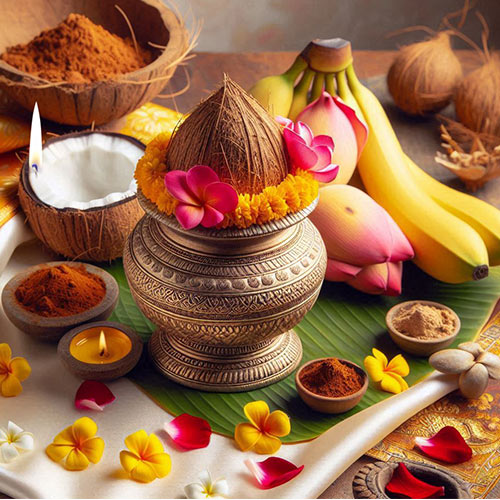
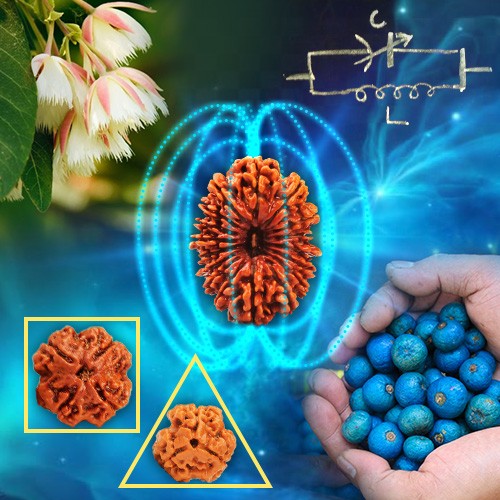
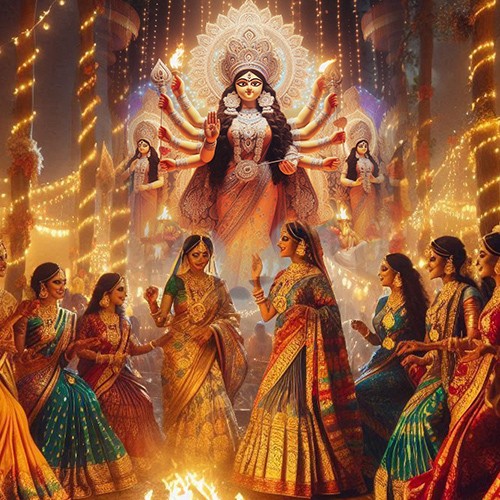

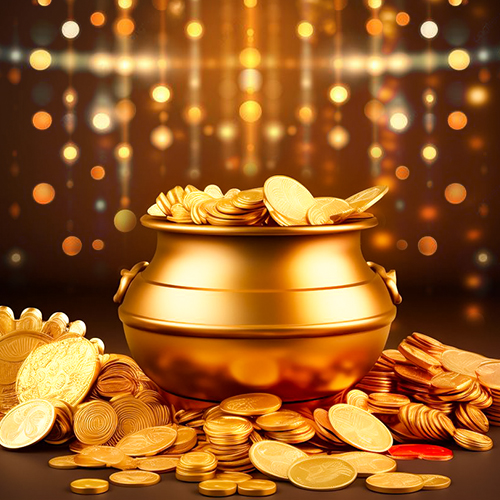
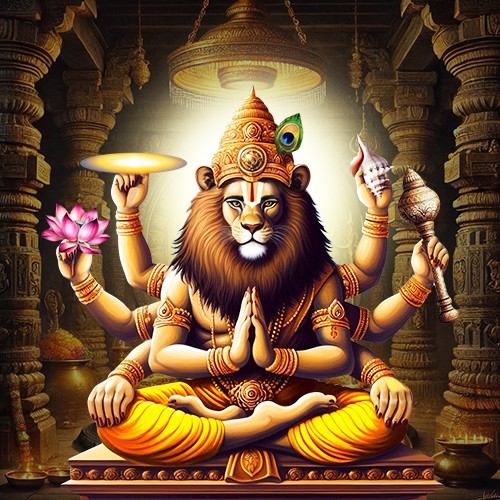
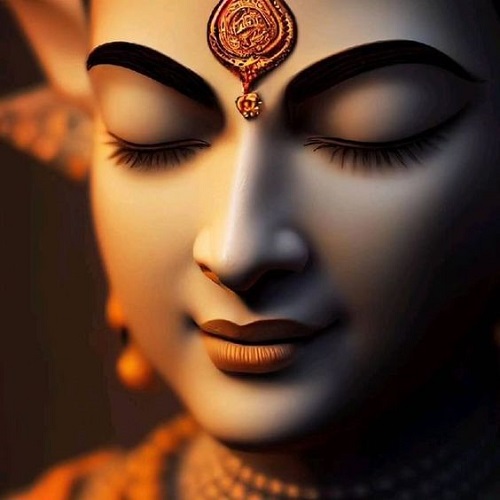
.jpg)
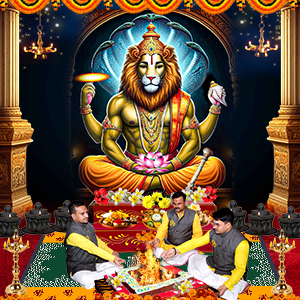
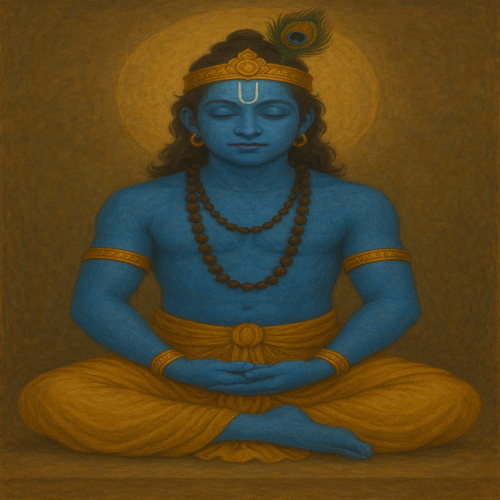
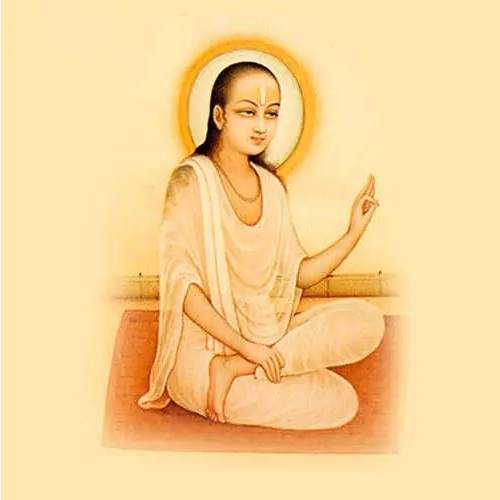
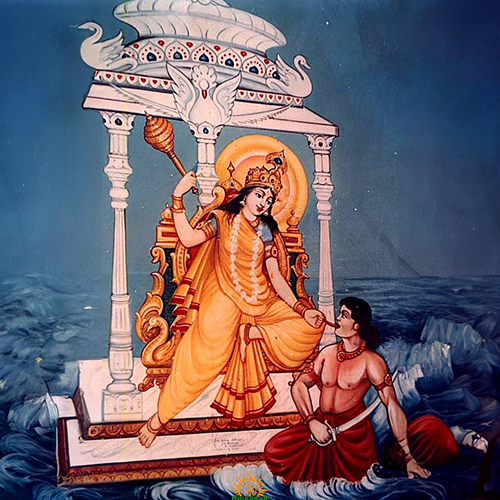
Comments 0
Leave your thought here